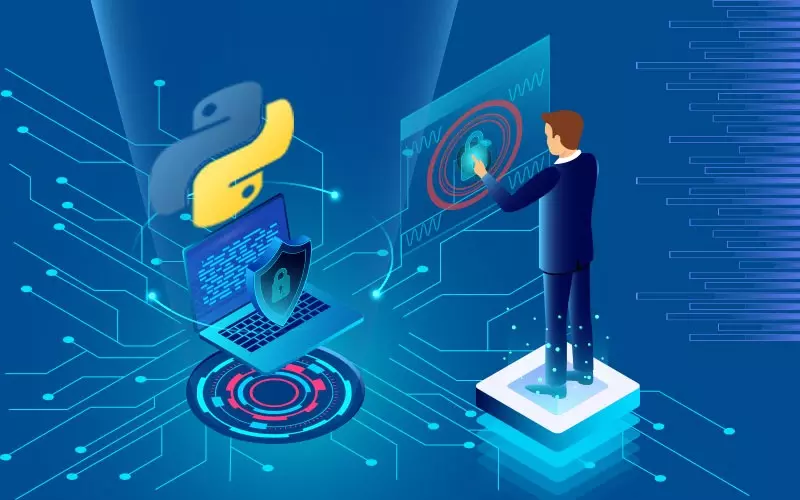Python and IoT: Connecting the Physical World in 2023
In today’s digital era, the Internet of Things (IoT) has emerged as a groundbreaking technology that connects the physical world with the digital realm. With the advent of Python, a powerful and versatile programming language, the possibilities for leveraging IoT have expanded significantly. In this article, we will explore the intersection of Python and IoT, examining how this dynamic duo is transforming various industries and unlocking a myriad of opportunities for innovation.
Introduction: The Convergence of Python and IoT
In recent years, IoT has gained immense popularity as it enables the connection of physical devices to the internet, allowing them to communicate and share data. Python, known for its simplicity and readability, has emerged as a preferred programming language for IoT development. Python’s extensive range of libraries, frameworks, and community support make it an ideal choice for building IoT applications.
Python’s Role in IoT Development
Python plays a pivotal role in IoT development by providing a user-friendly and efficient programming language for creating IoT solutions. Its clean syntax and easy-to-understand code make it accessible to developers of all skill levels. Python’s versatility allows it to be used across various stages of IoT development, including data collection, analysis, and device control.
Advantages of Using Python for IoT
Using Python for IoT offers several advantages. Firstly, Python’s simplicity reduces development time and enhances productivity. Its vast ecosystem of libraries, such as NumPy, Pandas, and Matplotlib, simplifies data analysis and visualization. Additionally, Python’s compatibility with different platforms and operating systems allows for seamless integration with IoT devices.
Python Libraries and Frameworks for IoT
Flask
Flask is a popular Python web framework that is lightweight and easy to use. It enables developers to create RESTful APIs for IoT devices, facilitating seamless communication between devices and applications.
MQTT
MQTT (Message Queuing Telemetry Transport) is a lightweight messaging protocol commonly used in IoT. Python provides MQTT libraries like paho-mqtt, which simplify the process of sending and receiving data between IoT devices.
Raspberry
Pi Raspberry Pi is a credit card-sized computer widely used in IoT projects. Python’s compatibility with Raspberry Pi’s GPIO pins allows developers to control and interact with external sensors, actuators, and other hardware components.
PySerial
PySerial is a Python library that provides support for serial communication, essential for connecting and controlling IoT devices via serial ports.
Building IoT Applications with Python
Collecting Sensor Data
Python enables developers to collect data from various sensors attached to IoT devices. Whether it’s temperature, humidity, or motion sensors, Python simplifies the process of reading and processing sensor data.
Analyzing and Visualizing Data
Python’s data analysis and visualization libraries, such as Pandas and Matplotlib, allow developers to extract insights from the collected IoT data. These tools enable the creation of intuitive and interactive visualizations for better understanding and decision-making.
Controlling IoT Devices
Python provides the capability to control IoT devices remotely. By leveraging Python libraries and frameworks, developers can send commands and receive data from IoT devices, enabling real-time monitoring and control.
Python’s Contribution to Smart Cities
Python’s role in building smart cities is undeniable. With Python-powered IoT solutions, cities can optimize resource management, improve traffic flow, enhance public safety, and create sustainable environments. Python’s versatility and ease of use make it an ideal choice for developing smart city applications.
Python and IoT in Healthcare
The fusion of Python and IoT holds tremendous potential in the healthcare industry. From remote patient monitoring to real-time health data analysis, Python-based IoT solutions can revolutionize healthcare delivery, improve patient outcomes, and enable personalized medicine.
Python and Industrial IoT
Python’s versatility and extensive library support make it an excellent choice for industrial IoT applications. By integrating Python with industrial devices and systems, businesses can streamline operations, optimize efficiency, and implement predictive maintenance strategies.
Python and Home Automation
Home automation is an area where Python truly shines. Python’s simplicity, combined with IoT devices like smart speakers, thermostats, and security systems, allows homeowners to control and automate various aspects of their homes easily. Python’s user-friendly syntax makes it accessible to individuals without extensive programming experience.
Challenges and Future Trends in Python and IoT
While Python and IoT offer immense possibilities, several challenges need to be addressed. These include ensuring data security and privacy, managing the scalability of IoT solutions, and handling interoperability issues. However, as technology advances, we can expect continued growth in the adoption of Python for IoT, leading to innovative solutions and expanded applications.
Conclusion
Python’s integration with IoT has revolutionized the way we interact with the physical world. Its simplicity, versatility, and extensive library support make it an excellent choice for building IoT applications. As we move forward into 2023, Python’s influence on the IoT landscape is set to grow further, enabling unprecedented connectivity and transforming industries across the board.
FAQs (Frequently Asked Questions)
Q1: Is Python the only programming language used for IoT?
No, Python is not the only programming language used for IoT. Other languages like C, C++, Java, and JavaScript are also commonly used depending on the specific requirements of the IoT project.
Q2: Can I use Python to connect IoT devices with cloud platforms?
Yes, Python provides libraries and frameworks that facilitate connecting IoT devices with popular cloud platforms like Amazon Web Services (AWS) and Microsoft Azure.
Q3: How can Python benefit small businesses in implementing IoT solutions?
Python’s simplicity and ease of use make it an ideal choice for small businesses looking to implement IoT solutions. It allows for faster development and reduces the learning curve for developers.
Q4: Is Python suitable for real-time IoT applications?
Yes, Python can be used for real-time IoT applications. While it may not be the most performant language for time-critical applications, Python’s rich ecosystem of libraries and frameworks compensates for most real-time requirements.
Q5: Where can I learn more about Python and IoT?
You can find a wealth of online resources, tutorials, and documentation on Python and IoT. Websites like official Python documentation, online learning platforms




